AccessComputing: Building Capacity to Promote the Success of Students, Including Veterans, With Disabilities in Computing and Information Technology Fields (2011)
May 24 - 26, 2011
Arlington, Virginia
The goal of this CBI was to explore ways to increase the participation and success of students, including veterans, with disabilities in computing and information technology postsecondary studies and careers.
Participants in this two-day event included student services leaders, administrators, and teaching faculty from institutions around the country. Hosted by the UW AccessComputing project, the CBI provided a forum for comparing recruitment and access challenges, sharing successful practices, developing collaborations, and identifying systemic change initiatives for increasing the capacity of institutions to serve students with disabilities. Specific goals of this CBI were to:
- gain information about recruiting, serving, and retaining students, including veterans, with disabilities on postsecondary campuses
- brainstorm ideas for bridging the gap between computing faculty, disability services faculty, community colleges, and veterans services
- share information about best practices for serving students, including veterans, with disabilities, funding opportunities, and resources
- network
Speakers and panelists were also CBI participants. Many either had disabilities or were practitioners with direct experience in serving students with disabilities. Broad issues that were discussed included:
- transitions to post-secondary education
- recruitment and retention of students, including veterans, with disabilities in postsecondary education
- transition to employment after postsecondary graduation
About the CBI (AccessComputing: Building Capacity to Promote the Success of Students, Including Veterans, With Disabilities in Computing and Information Technology Fields 2011)
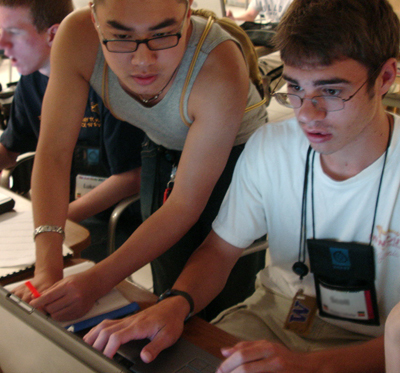
The AccessComputing: Building Capacity to Promote the Success of Students, Including Veterans, with Disabilities in Computing and Information Technology Fields CBI took place May 24-26, 2011 in Arlington, VA. Its overall purpose was to explore ways to increase the participation and success of students, including veterans, with disabilities in computing and information technology postsecondary studies and careers. AccessComputing institutional partners were represented at the event; most came with local teams that included computing/IT faculty, disability services, veterans organizations, and/or local community colleges.
Participants in this two-day event included student services leaders, administrators, and teaching faculty from institutions around the country. Hosted by the UW AccessComputing project, the CBI provided a forum for comparing recruitment and access challenges, sharing successful practices, developing collaborations, and identifying systemic change initiatives for increasing the capacity of institutions to serve students with disabilities. Specific goals of this CBI were to
- gain information about recruiting, serving, and retaining students, including veterans, with disabilities on postsecondary campuses;
- brainstorm ideas for bridging the gap between computing faculty, disability services faculty, community colleges, and veterans services;
- share information about best practices for serving students, including veterans, with disabilities, funding opportunities, and resources; and
- network.
Speakers and panelists were also CBI participants. Many either had disabilities or were practitioners with direct experience in serving students with disabilities. Broad issues that were discussed included
- transitions to post-secondary education;
- recruitment and retention of students, including veterans, with disabilities in postsecondary education; and
- transition to employment after postsecondary graduation.
In this CBI
- all participants contributed to its success;
- experts in all topic areas were in the audience; and
- although some predetermined professional development was presented, new content was delivered as the meeting unfolded and participant interests were expressed and expertise was made known.
The CBI was comprised of panel and individual presentations and working group discussions. Panel discussions offered participants opportunities to discover new ways for campus disability services, computing departments, and various other groups to collaborate to improve the postsecondary experiences of students with disabilities, including veterans. Individual presentations included information on computing and IT career opportunities for students with disabilities and best practices for institutions serving students with disabilities, as well as web accessibility.
Participants in small working groups, responded to the following questions:
- What are your thoughts about specific steps your institution or computing/IT department could take to embrace universal design?
- What kinds of services, supports, and institutional/departmental policies and procedures can be implemented to promote the participation and success of students with disabilities, including veterans, in computing and IT studies and careers?
- How can universal design and accessibility issues with respect to IT be integrated into campus disability and computing services, computing and IT curriculum, and other units?
- What kinds of services, supports, and institutional/departmental changes can be implemented to promote the participation and success of students with disabilities, including veterans, in computing and IT studies and careers?
- What future collaborations and other activities would be beneficial to you as we address the AccessComputing project goal?
- What are some preliminary ideas regarding how disabled student services, computing departments and veterans-serving organizations in your region might work together to increase the participation and success of students with disabilities in computing and IT fields?
The results of the pre-conference surveys sent to participants, agenda for the CBI, summaries of the presentations and panels, and reports from the working group discussions are provided on the following pages.
Agenda (AccessComputing: Building Capacity to Promote the Success of Students, Including Veterans, With Disabilities in Computing and Information Technology Fields 2011)
Tuesday
7:00 - 9:00 p.m.
Registration and Evening Social
Wednesday
8:00 - 9:00 a.m.
Buffet Breakfast and Networking
9:00 - 9:45 a.m.
Welcome
- CBI description, objectives, and schedule
- Introductions
- Housekeeping details: restrooms, breaks, and meals
- Accessibility of meeting considerations
- CBI materials
- AccessComputing goals, objectives, activities/products
9:45 - 10:00 a.m.
View Video
Returning from Service: College and IT Careers for Veterans
10:00 - 10:45 a.m.
Current Trends and Opportunities In Computing
Richard Ladner, AccessComputing Co-Director
10:45 - 11:00 a.m.
Break
11:00 a.m. - 12:15 p.m.
Approaches to Access: Accommodations and Universal Design
Question 1: What are your thoughts about specific steps your institution or computing/IT department could take to embrace universal design?
12:15 - 1:15 p.m.
Lunch and Working Group Discussion
Question 2: What kinds of services, supports, and institutional/departmental policies and procedures can be implemented to promote the participation and success of students with disabilities, including veterans, in computing and IT studies and careers?
1:15 - 2:15 p.m.
Assistive and Accessible Technology
Terrill Thompson, AccessComputing Technology Accessibility Specialist, University of Washington
2:15 - 2:45 p.m.
Working Group Discussion
Question 3: How can universal design and accessibility issues, with respect to IT, be integrated into campus disability and computing services, computing and IT curriculum, and other units?
2:45 - 3:00 p.m.
Break
3:00 - 4:00 p.m.
Panel Discussion
What are the experiences of people with disabilities in postsecondary education?
What services, supports, and other conditions promoted or inhibited success?
Panelists: Jonathan Avila, Chief Accessibility Officer, SSB Bart Group; Chris Putsche, Student, University of Maryland Baltimore County; Laureen Summers, Program Associate, American Association for the Advancement of Science
4:00 - 4:45 p.m.
Working Group Discussion
Question 4: What kinds of services, supports, and institutional/departmental changes can be implemented to promote the participation and success of students with disabilities, including veterans, in computing and IT studies and careers?
4:45 - 5:00 p.m.
Preview of Tonight's Activity, Tomorrow's Agenda, Daily Feedback
6:30 - 8:30 p.m.
Dinner and Working Group Discussion
Question 5: What future collaborations and other activities would be beneficial to you as we address the AccessComputing project goal?
Thursday
8:00 - 9:00 a.m.
Buffet Breakfast and Networking
9:00 - 9:45 a.m.
Panel Discussion
How can disabled student services, computing and IT departments and veterans-serving organizations work together to increase the participation and success of students with disabilities in computing and IT fields?
Panelists: Daniela Marghitu, Director and Founder, Auburn University Education and Assistive Technology; Michael Richardson, Assistant Director, Disability Resources for Students, University of Washington; Scott Swaim, Veterans Services Director, Valley Cities Counseling, WDVA War Trauma Program; Mark Wambach, Assistant Professor, Rochester Institute of Technology
9:45 - 10:15 a.m.
Working Group Discussion
Question 6: What are some preliminary ideas regarding how disabled student services, computing departments and veterans-serving organizations in your region might work together to increase the participation and success of students with disabilities in computing and IT fields?
10:15 - 11:30 p.m.
Working Group Meeting
Each local team will draft plans for future activities in their community–engaging faculty, disability support services, community colleges, and veterans organizations–for the purpose of recruiting and supporting students with disabilities in computing and IT fields.
11:30 a.m. - 12:15 p.m.
Working Group Reports
Working group representatives each deliver a brief summary of their group's discussion and accomplishments.
12:15 - 1:30 p.m.
Lunch and Working Group Meeting
Continue team planning meetings or discuss what future collaborations and other activities would be beneficial to you as you address the AccessComputing project goal.
1:30 - 2:00 p.m.
How to Engage with AccessComputing Project Staff and Other Partners
Examples of internships, minigrants, communities of practice, campus-focused capacity building institutes, conference exhibits, and presentations
Brianna Blaser, AccessComputing Program Coordinator/Counselor, University of Washington
Working Group Reports
Report ideas and suggestions from last evening's dinner discussion and today's lunch to the CBI.
Concluding Remarks and CBI Evaluation
Richard Ladner, Sheryl Burgstahler
Participants (AccessComputing: Building Capacity to Promote the Success of Students, Including Veterans, With Disabilities in Computing and Information Technology Fields 2011)
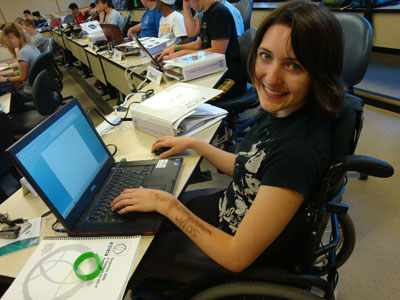
Stakeholder groups represented in the CBI included:
- student services leaders and administrators
- computing faculty
- technology specialists
- individuals working for veteran-serving organizations
- individuals with disabilities
The following individuals participated in the CBI:
Susan Ackerman
Disability Services Director
Rochester Institute of Technology
smacst@rit.edu
Karen Alkoby
Assistant Professor
Gallaudet University
karen.alkoby@gallaudet.edu
Lisa Anthony
Post-Doctoral Research Associate
University of Maryland, Baltimore County
lanthony@umbc.edu
Juan Arratia
PI, Caribbean Computing Center for Excellence
Universidad Metropolitana
juan.arratia@gmail.com
Shawna Arroyo
Manager, Student Technology and Planning
New Mexico State University
shawna@nmsu.edu
Jonathan Avila
Chief Accessibility Officer
SSB Bart Group
jon.avila@ssbbartgroup.com
Taha Ben Brahim
Ph.D. Candidate
Auburn University
benbrah@tigermail.auburn.edu
Jeffrey Bigham
Assistant Professor
University of Rochester
jbigham@cs.rochester.edu
Brianna Blaser
Program Coordinator/Counselor, DO-IT
University of Washington
blaser@uw.edu
Erin Brady
Student
University of Rochester
erinleebrady@gmail.com
Cheryl Branker
Associate Vice Provost
Director, Disability Services Office
North Carolina State University
cheryl_branker@ncsu.edu
Carol Brown
Assistive Technology Specialist
New Mexico State University
cbrown@nmsu.edu
Sheryl Burgstahler
Co-Director, AccessComputing
Director and Founder, DO-IT
University of Washington
sherylb@uw.edu
Gerald Chidume
Instructor
Auburn University
chidugc@auburn.edu
Ibrahim Dahlstrom-Hakki
Education and Research Outreach Specialist
Landmark College
idahlstromhakki@landmark.edu
Steve Fadden
Vice President for Research
Landmark College
stevefadden@landmark.edu
Luis Font
Coordinator, Caribbean Computing Center for Excellence
Universidad Metropolitana
lufont@suagm.edu
Carol Frieze
Director, Women@SCS
Carnegie Mellon University
cfrieze@cs.cmu.edu
Bryan Harrison
Doctoral Candidate
University of Rochester
bryan.harrison@rochester.edu
Greg Kraus
University IT Accessibility Coordinator
North Carolina State University
greg_kraus@ncsu.edu
Stephanie Kreseen
Assistant Director, Institute for Research and Training
Landmark College
stephaniekreseen@landmark.edu
Ravi Kuber
Assistant Professor
University of Maryland, Baltimore County
rkuber@umbc.edu
Richard Ladner
Professor, Computer Science
Co-Director, AccessComputing
University of Washington
ladner@cs.washington.edu
Randy Larry
Director, Reaching the Pinnacle
New Mexico State University
rlarry@nmsu.edu
David Lawrence
Associate Professor
Rochester Institute of Technology
delnet@rit.edu
Mariah Luft
Assistant to the Vice President for Information Services and CIO
Washington State University
mluft@wsu.edu
Daniela Marghitu
Director, Auburn University Education and Assistive Technology
Auburn University
marghda@auburn.edu
Lori Miller
Counselor/Faculty
Seattle Central Community College
lmiller@sccd.ctc.edu
Denise Gagnon Perdue
Coordinator, Student Support Services
University of Maryland, Baltimore County
dperdue@umbc.edu
Sapna Prasad,
Education and Research Outreach Specialist
Landmark College
sapnaprasad@landmark.edu
Christopher Putsche
Student
University of Maryland Baltimore County
c.putsche@gmail.com
Michael Richardson
Assistant Director, Disability Resources for Students
University of Washington
mike67@uw.edu
Rebecca Sitton
Accessible Technology Coordinator
North Carolina State University
rebecca_sitton@ncsu.edu
Teresa Sletten
Disability Program Coordinator for Project Enable
New Mexico State University
tsletten@nmsu.edu
Andreas Stefik
Assistant Professor
Southern Illinois University Edwardsville
stefika@gmail.com
Melissa Stefik
Specialist
Southern Illinois University Edwardsville
harrismel@gmail.com
Laureen Summers
Program Associate, ENTRY POINT!
American Association for the Advancement of Science
lsummers@aaas.org
Scott Swaim
Director
Valley Cities Counseling/WDVA
sswaim@valleycities.org
Melissa Thomeczek
Associate Professor
Southern Illinois University Edwardsville
mthomec@siue.edu
Terrill Thompson
Technology Accessibility Specialist, AccessComputing
University of Washington
tft@u.washington.edu
Sabina Vermeulen
Associate Director, Disability Services Office
North Carolina State University
sabina_vermeulen@ncsu.edu
Mark Wambach
Assistant Professor
Rochester Institute of Technology
mlwnbs@rit.edu
Dain White
Web Coordinator
Washington State University
dainw@wsu.edu
Mary Widom
Program Coordinator, Women@SCS
Carnegie Mellon University
marwidom@cs.cmu.edu
Pre-conference Surveys (AccessComputing: Building Capacity to Promote the Success of Students, Including Veterans, With Disabilities in Computing and Information Technology Fields 2011)
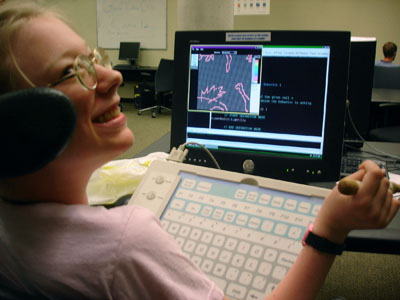
Prior to the CBI, participants were asked to complete an online survey with a series of questions about their campus and their expectations for the Capacity-Building Institute. Below is a summary of the questions and responses, edited for clarity.
What do you think are the challenges students with disabilities might face in pursuing computing and IT fields at postsecondary institutions?
- Very low expectations, and misconceptions and assumptions made by faculty, staff, peers, family, and friends.
- Accessibility of computing, development environments, tools, assistive technology, presentation and lecture notes, and course resources such as textbooks.
- Inaccessible course content in required courses not related to the IT discipline.
- A lack of role models and mentors, including those with disabilities; and clear pathways to follow.
- Lack of information for hiring officials regarding the abilities, skills, and potential of students with disabilities to "do the work."
- Challenges in working with disability service units.
- Lack of the application of universal design principles in courses.
What are specific computing/IT access issues for students with disabilities on your campus, in your computing department, in your classes, and/or in your research projects?
- Inaccessibility of campus IT environments, websites, and web-based applications.
- Lack of accessible hardware and software, furniture, and classrooms.
- For students with hearing impairments, a lack of interpreters familiar with technical language specific to computing.
- For students with vision impairments, difficulties accessing content where graphical interfaces are required.
- Faculty and staff with outdated attitudes toward students with disabilities.
- Access to the expertise and resources necessary to give students access to internships, co-ops, and computing/IT-related experiences.
- Lack of effective recruitment of students with disabilities.
- Perception that some students with disabilities seem to need or want help.
- Many courses have not been designed to explicitly support students with disabilities. Some professors are unaware of how to adapt their materials and often students simply drop inaccessible courses without advocating for their needs.
- On the part of students with disabilities there seems to be a learned helplessness, lack of exposure to technology, and the belief that technical fields aren't for them.
Who on your campus engages in these issues?
- University IT Accessibility Coordinator.
- University-wide committee on IT accessibility to set direction, give guidance, and promote accessibility around campus.
- Disability Services, Disability Resource Center, or Disability Support Services.
- Student Access Services.
- College Institute for Research and Training.
- Math and Computer Studies Department.
- Technology Learning Services Department.
- Transfer Services.
- All departments explore how students can better access programs and resources, and develop skills necessary for success beyond our two-year program.
- An individual within the IT department.
- Student Affairs.
- Office for Supportive Services.
- All faculty, researchers, and coaches.
- Various offices.
- Purchasing for procurement.
- IT for web accessibility.
- Equal Opportunities Services Office holds seminars for faculty and staff on disability awareness and maintains resources.
- Academic advisors to help determine right combination of courses.
- A University IT Accessibility Coordinator.
- DO-IT Center supports students with disabilities and trains faculty and staff.
- Computer Science and Engineering faculty accommodate students with disabilities in their classes.
- A campus access office pays able-bodied students to take notes for disabled students.
- Given that all students on our campus have learning disabilities, everyone engages directly with these issues by helping students understand their disability and realize that there are ways to overcome or work with one's challenges.
What do you want to gain from this Capacity Building Institute?
- Increase awareness of the needs of students with disabilities and veterans.
- Network with other professionals, develop partnerships, and gain supports.
- Learn about best practices to recruit and retain students into computing fields.
- Learn about proposal/funding opportunities and develop collaborative ideas that can be turned into proposals for state/federal/foundation/corporate funding.
- Identify how our group can help build capacity through workshops, consulting, and specialized services.
- Gain insight into how IT professionals think students with disabilities might "fit in" within their work environment.
- Learn how our Information Services organization can better assist and provide opportunities for students on campus.
- Learn how to specifically support veterans in the IT fields.
- Better understand how universal design can be applied in the classroom.
- Find out about opportunities for students on our campus.
- Learn more about raising awareness of the struggles of students with hidden disabilities.
- Gain knowledge of the tools available to prevent students with disabilities from feeling disenfranchised or unable to participate.
- Understand the financial, institutional, and personal pressures or issues involved in making sure assistive technologies and accessible computing systems get to those who can benefit from them.
- Learn how to adapt course materials and resources.
- Learn about new resources that I can direct colleagues to.
- Learn what methodologies and best practices I should be using to foster inclusivity in the systems I develop.
Activities (AccessComputing: Building Capacity to Promote the Success of Students, Including Veterans, With Disabilities in Computing and Information Technology Fields 2011)
A series of activities were undertaken to increase the participation of students with disabilities, including veterans, in computing and information technology (IT) postsecondary education and career fields are coordinated by the Alliance for Access to Computing Careers (AccessComputing). AccessComputing is led by the Department of Computer Science and Engineering and DO-IT (Disabilities, Opportunities, Internetworking, and Technology) at the University of Washington (UW). AccessComputing is funded by the Computer and Information Science and Education program of the National Science Foundation (#CNS-1042260).
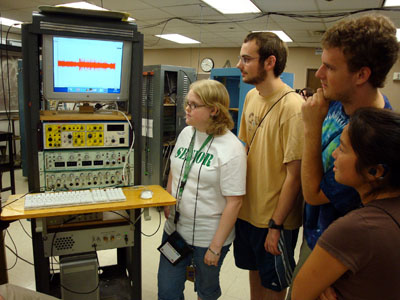
This publication shares the proceedings of the AccessComputing: Building Capacity to Promote the Success of Students, Including Veterans, With Disabilities in Computing and Information Technology Fields that was held for AccessComputing institutional partners from May 24-26, 2011, in Arlington, VA. It may be useful for people who:
- participated in the capacity building institute (CBI)
- are on the local project teams of AccessComputing institutional partners
- want guidance for conducting a CBI at their institution, in their region, or at a national or international forum
- seek to increase their understanding of issues surrounding the participation of students, including veterans, with disabilities in computing and IT studies and careers
- are motivated to engage in an electronic community to discuss these issues
- would like to access resources to help them make their campus courses, services, and activities more welcoming and accessible to students, including veterans, with disabilities
- have promising practices to share with others
About AccessComputing
AccessComputing works to increase the participation of people with disabilities in computing and IT fields. AccessComputing institutional and organizational partners apply evidence-based practices to:
- increase the number of students with disabilities successfully pursuing degrees and careers in computing fields
- increase the capacity of postsecondary computing departments to fully include students with disabilities in computing courses and programs
- create a nationwide resource to help students with disabilities pursue computing fields
- help computing educators and employers, professional organizations, and other stakeholders develop more inclusive programs and share effective practices nationwide
AccessComputing institutional partners are Auburn University, Carnegie Mellon University, City University of New York (Queen's College), Gallaudet University, Georgia Institute of Technology, Landmark College, New Mexico State University, North Carolina State University, Rochester Institute of Technology (RIT), Southern Illinois University Edwardsville, University of Maryland Baltimore County, University of Rochester, and Washington State University.
AccessComputing organizational partners are the Association for Computing, Caribbean Computing Center for Excellence (CCCE), Anita Borg Institute, Advancing Robotics Technology for Societal Impact (ARTSI), Commonwealth Alliance for Information Technology Education (CAITE), Center for Minorities and People with Disabilities in Information Technology (CMD-IT), Computing Research Association (CRA), Computer Science Teachers Association (CSTA), Georgia Computes, Into the Loop, Midwest RDE Alliance, National Center for Women & Information Technology (NCWIT), National Federation of the Blind Jernigan Institute, National Girls Collaborative Project (NGCP), Empowering Leadership Alliance (ELA), Virtual Alliance for Deaf and Hard of Hearing in STEM, Reaching the Pinnacle (RTP), STARS Alliance, East Alliance for Students with Disabilities in STEM, and Computing Alliance of Hispanic-Serving Institutions (CAHSI).
AccessComputing collaborates with project partners by:
- conducting CBIs focused on increasing the participation of students with disabilities in computing and IT academic programs and careers
- sharing the results of the CBIs with other institutions and individuals who serve students with disabilities
- providing an electronic forum to continue discussion of issues for students, including veterans, with disabilities and increase services and supports for these students
- extending resources to other programs and promising practices via an online searchable Knowledge Base
Presentation Summaries (AccessComputing: Building Capacity to Promote the Success of Students, Including Veterans, With Disabilities in Computing and Information Technology Fields 2011)
Current Trends and Opportunities in Computing
Richard Ladner
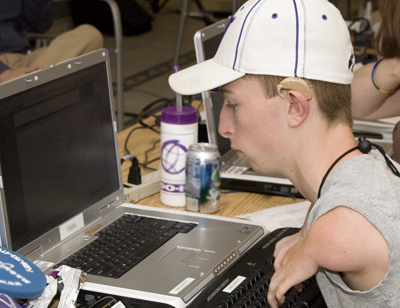
People with disabilities are participating in almost every computing field. Success stories include TV Raman, a blind computer scientist at Google; Christian Vogler, a deaf computer scientist who has worked on computer-based sign language recognition; Chieko Asakawa, a blind scientist at IBM Tokyo Research Lab who has worked to improve accessibility of web pages; and Jonathan Kuniholm, a veteran with a disability working on prosthetic limbs. Other notable computer scientists with disabilities are David Tseng, Ken Harrenstein, Karen Alkoby, Jeanine Cook, Raja Kushalnagar, and Dan Berry. Some people with disabilities are highly motivated to pursue careers in accessibility research.
In spite of the successes described above, students with disabilities tend to drop out of computing majors more than other students and very few of them go on for advanced degrees in computing. National Science Foundation (NSF) data reveals that students with disabilities are about equally interested in natural science and engineering. However, students with disabilities are less likely than students without disabilities to complete a bachelor's degree; some data reveal that only 40% of students with disabilities attained bachelor's degrees, versus 60% of all students. Graduate students with disabilities are less likely than graduate students without disabilities to major in natural science and engineering. NSF estimates that, although people with disabilities make up 16% of the population and 10% of the U.S. workforce, they account for 11% of the STEM undergraduate student population, 7% of the STEM graduate student population, 1% of all STEM doctorate recipients, 5% of the STEM workforce, and 8% of STEM postsecondary faculty.
Computing has changed the way we live, work, learn, and communicate. Computing drives advances in many fields and enables growth and development in our economy. High-tech fields are growing at a fast rate—recent data from the Department of Labor indicates that 57% of the total growth in science and engineering occupations is in computing fields. Jobs in computing also have salaries that are at the top of the chart. Computing jobs allow individuals to work in teams, using problem-solving skills, and doing technical work, but not rote work. There are opportunities in computing to build software applications such as workplace software, web applications, cell phone applications, computer games, and embedded applications. There are also research careers where participants can build the next generation of products, including those related to accessibility such as sign language recognition tools, automatic captioning, and mobile tools. People pursue computing careers for a wide variety of reasons and they enter diverse careers following a computer science or other computing-related education. They do not all migrate to traditional software development positions.
Computing fields need a diverse workforce to generate creative solutions in the future. A diverse workforce includes people with disabilities.
Approaches to Access: Accommodations and Universal Design
Universal design is a strategy that proactively addresses the diverse abilities and other characteristics of potential users of a product or environment. When applied, products and environments are usable by the broadest range of individuals without special adaptations. Universal design can be applied to technology, instruction, services, and physical spaces. Suggestions for integrating universal design follow:
- Design buildings so that individuals both with and without disabilities use the same entrance.
- Create descriptive signs that use inclusive language. Use large text on a high-contrast background.
- For images on websites and brochures, include people with diverse characteristics with respect to race, gender, age, and disability.
- Provide multiple modes of accessing content. For example, consider providing a text document to accompany audio content.
- Provide work surfaces that are adjustable.
- Prepare all staff to work with all participants by offering training in universal design and accommodations.
For more information about the application of universal design within postsecondary institutions, consult the Center for Universal Design in Education.
Assistive and Accessible Technology
Terrill Thompson
Students use diverse technologies to access information. In addition to a growing variety of input and output devices such as tablet computers and mobile phones, some students use assistive technologies (AT) such as screen readers, Braille output devices, screen magnification, speech input technologies, and alternative keyboards or mice. However, providing students access to assistive technology does not guarantee that they have access to information such as instructional or administrative content provided on a website.
Guidelines and standards exist for designing accessible IT. For example, the World Wide Web Consortium (W3C) finalized their Web Content Accessibility Guidelines (WCAG) 2.0 in December 2008. These guidelines include 62 success criteria for determining whether a web page is perceivable, operable, and understandable for all users, and robust enough to work across the full spectrum of web-enabled devices, browsers, and assistive technologies. In addition to the WCAG, the W3C is actively developing or upgrading other specifications, standards, and guidelines that support accessibility, including User Agent Accessibility Guidelines 2.0 (for browsers and assistive technologies), Authoring Tool Accessibility Guidelines 2.0 (for software that is used in authoring web pages), and Accessible Rich Internet Applications (ARIA) 1.0, which makes it possible to make dynamic web applications accessible, especially to screen reader users.
Section 508 standards for accessible IT apply explicitly to the federal government as part of Section 508 of the Rehabilitation Act as amended in 1998, though some states and higher education institutions have also adopted them. They are based on the highest priority checkpoints from WCAG 1.0 (the W3C's original Web Content Accessibility Guidelines), but they additionally include accessibility standards for other types of information technologies, including hardware, software, multimedia, telecommunications, and standalone technologies such as information kiosks. The Section 508 standards are currently being refreshed, and are expected to be closely aligned with WCAG 2.0.
Certain strategies can be employed to increase the availability of accessible technologies. For example, when choosing technology, asking "Is it accessible?" is less informative than asking specific questions such as those listed below:
- Can users perform all functions without a mouse?
- Has it been tested using screen readers?
- If it contains or supports multimedia, are accessibility features such as captions supported?
- Is accessibility documentation available (e.g., the Voluntary Product Accessibility Template available at www.itic.org/index.php?src=gendocs&ref=vpat)?
- If an authoring tool, how does one create accessible content with it?
Consider the various roles people can play to ensure that technology is designed to be accessible. For example:
- Software engineers can design platforms (e.g., iOS, Android, HTML, PDF) that support accessibility.
- Authoring tool developers can support accessibility features of the platform.
- Content authors must know how to create accessible content and utilize the accessibility features of their tools in order to design accessible products.
- Those who purchase IT products, can demand accessible products from vendors; if a current product is not fully accessible they can state their expectation that accessibility will be built into the next version.
- AT should be designed to support accessibility features of products and content.
- Educators can teach students about universal design.
Also, AT can be designed to be intelligent. For example, if authors fail to use proper heading tags, AT could attempt to recognize heading structure by analyzing the relative size, weight, and position of blocks of text on the page; if authors fail to add alternate text to images, AT could perform automatic character recognition to extract text from the images (if present) and use that for alternate text. These sorts of challenges present great opportunities for further research development in computer science.
For more information on AT and accessible design of IT consult, DO-IT's Accessible Technology page.
Reports from Panel Discussions (AccessComputing: Building Capacity to Promote the Success of Students, Including Veterans, With Disabilities in Computing and Information Technology Fields 2011)
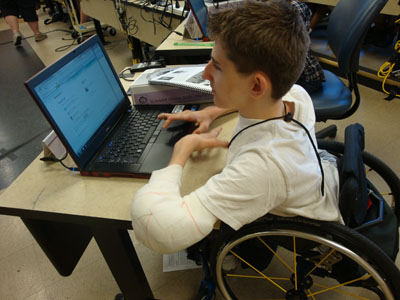
Experiences of Students with Disabilities
Panel members discussed the experiences of students with disabilities in computing fields. Challenges for students with disabilities they identified include the following:
- The need to advocate for yourself in college (and in the workforce) whereas in high school this role is taken on by parents, teachers, and advisors or counselors.
- Low expectations on the part of the student because of messages they receive from others, as well as on the part of faculty.
- The need to educate faculty or employers about your abilities despite having a disability.
Things that panelists suggested as being helpful for students with disabilities include the following:
- Providing copies of overhead slides.
- Ensuring that videos are captioned.
- Having access to reliable interpreters that understand technical language.
- Meeting other students with disabilities.
- Having cheerleaders and mentors who encourage them to pursue their goals.
- Creating a support system around the students.
- Assisting students in keeping up with new technology.
- Understanding that, depending on their disability and need for accommodations, students may choose to disclose at any point or not to disclose at all.
Panelists made the following suggestions to encourage students with disabilities in learning:
- Faculty should help ensure that students support each other during group work. This may mean reading materials aloud rather than everyone reading to themselves, helping students understand how to work with an interpreter, or helping to keep the atmosphere light to avoid the seriousness that comes over the room when there is a person with a disability present.
- Faculty should approach the topic of disability by asking a student what, if anything, you can do to help the student be successful, instead of asking about the disability.
- Faculty should not discount students' ability in their class or school. Be sure to treat them as you would any other student.
- Internships are critical to the transition to the workplace. Faculty and staff should help students identify opportunities and make sure the internship matches the student's skill level.
Engagement of Support Services
How can disabled student services, computing/ IT departments and veterans-serving organizations work together to increase the participation and success of students with disabilities in computing and IT fields? Panelists shared the following suggestions from their experiences working with students, including veterans, with disabilities.
- Form partnerships to promote the success of students with disabilities. This can include groups on campus such as disability services, faculty, and teaching assistants, as well as outside organizations such as grant organizations or organizations focused on disability issues.
- Look for no or low cost solutions and or grant-funded opportunities. In a time of budget cuts, many universities are limited in terms of having money to spend and faculty are overwhelmed by larger class sizes. Some accessibility solutions have minimal cost to implement.
- When engaging with students with disabilities, ask them how you can help them be successful.
- Learn about resources that can better help you serve students with disabilities and veterans. Veteran organizations include veterans affairs groups on campus, local military posts, vocational rehab, veterans organizations, and the Department of Veterans Affairs.
- Develop focus groups with students with disabilities or with groups of student veterans. Use this time to ask them what would increase accessibility on campus and in the classroom. Be sure to follow up on suggestions.
- Engage campus leaders. If a university president supports students with disabilities, that will trickle-down to others. For example, when RIT's president learned to sign for convocation, it sent a message about the institution's commitment to students with disabilities. If there is a problem at the top of an organization, however, it affects everyone.
- Develop mentoring relationships. Mentoring groups for students can provide excellent supports and can assist students who may be uncomfortable asking for help. Including faculty in these groups can create rich mentoring as well.
- Keep in mind that veterans may be hesitant to use resources for students with disabilities. One institution reported success recruiting veterans with disabilities by advertising a study skills group to veterans without mentioning disabilities; all of the veterans recruited ended up disclosing a disability. Other institutions have had success by publishing articles about veterans who have secured services, using their success stories to get the word out.
- Since veterans often have a difficult time transitioning from the structured environment of the military to the unstructured environment of an academic setting, it may be helpful to identify sponsors or mentors who can help them on campus.
- Be knowledgeable about services and resources. For example, faculty can refer students, including veterans, with disabilities to the AccessComputing team, which gives them access to internships and e-mentoring.
- Speak about disability issues. Discussing these issues at committee and other campus meetings can help faculty and staff learn about the issues and available resources.
- Include a disability statement in syllabi to encourage students to talk to them at the beginning of the term. If you notice a student is struggling, ask them what you can do to help rather than asking about a disability. You can also refer them to resources on campus like disability services, the counseling center, or the advising office.
- Include resources in the disability services office accommodation letter. Note where faculty can find resources and support in working with students, including veterans, with disabilities.
Reports from Working Group Discussions (AccessComputing: Building Capacity to Promote the Success of Students, Including Veterans, With Disabilities in Computing and Information Technology Fields 2011)
CBI participants represented a wide range of stakeholder groups, including postsecondary faculty, disability service staff, other academic staff, and employees of veterans-serving organizations. They came together to brainstorm ideas for serving student with disabilities, including veterans, in postsecondary education in general, and, specifically, to encourage students with disabilities to pursue computing and IT careers. Their discussions are summarized below.
Applications of Universal Design
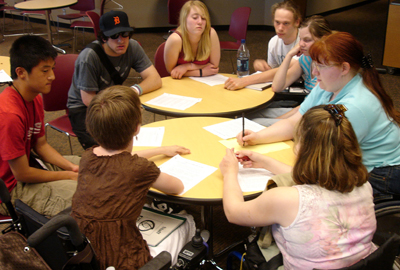
Question 1: What are your thoughts about specific steps your institution or computing/IT department could take to embrace universal design?
- Universal design isn't just about helping students with disabilities, it is also about good education strategies and pedagogy. Everyone has different learning styles, and incorporating tenets of universal design helps ensure that all students can be successful.
- At some institutions, there have been efforts to ensure that introductory courses are more welcoming and better designed overall. This hasn't always carried over to upper level classes.
- Many faculty are unfamiliar with steps to take to incorporate universal design principles into their courses. It may be helpful to provide short seminars, information sessions, and/or resources with tips on how to make classes more accessible.
- Working with a campus organization that already exists to help teachers improve their teaching may be a good way to disseminate information about universal design.
Implementation Strategies
Question 2: What kinds of services, supports, and institutional or departmental changes can be implemented to promote the participation and success of students with disabilities, including veterans, in computing and IT studies and careers?
- There is still a stigma attached to disability; be prepared to push back against negative comments and outdated arguments.
- Be prepared for colleagues who will argue that adaptive equipment costs too much because few students will use it or that captioning on the Megatron at graduation will be unattractive.
- Build relationships and partnerships that can benefit you. Non-profit groups may have resources that can help. Partners on campus may be able to help students find resources or mentors.
- Consider inviting speakers with disabilities to speak to your department. It helps to demonstrate to the larger community that people with disabilities can succeed in computing fields.
- Create opportunities for students with disabilities to speak to faculty about their experiences. This may be in a formal panel discussion or in an informal group discussion.
- Make accessibility research visible in your computing department by teaching a class or bringing in speakers to raise awareness of these issues.
- Help students prepare for their transitions to the professional world. This might mean internships, mentoring, or mock interviews with local professionals.
IT Strategies
Question 3: How can universal design and accessibility issues, with respect to IT, be integrated into campus disability and computing services, computing and IT curriculum, and other units?
- When developing new websites or technology, think about accessibility early in the design stage. Retroactively making a website or software accessible can be time intensive and costly.
- Think about integrating a section on accessibility into computing classes. Doing so could help to raise awareness of accessibility issues among a larger group of computing professionals. This could also be accomplished by getting students involved with the development of new projects either at your institution or with local tech companies. Require class projects to employ accessible design practices.
- Seek out accessible educational software. If you work with vendors, ask them about accessibility and present it as a marketing advantage over their competitors.
- Caption videos.
Plans for the Future
Question 4: What are some preliminary ideas regarding how disabled student services, computing departments and veterans-serving organizations in your region might work together to increase the participation and success of students with disabilities in computing and IT fields?
- Auburn University plans to integrate their computer and robotics camps designed for K-12 students with Landmark College. They would like to have Landmark College undergraduates with disabilities teach at the K-12 camps. They also plan to encourage their center on campus that promotes excellence in teaching to collaborate with the team from Landmark College.
- The Caribbean Computing Center for Excellence will engage with AccessComputing to promote the success of students with disabilities among the participants in their center as well as add appropriate members to their team.
- Carnegie Mellon University plans to engage more individuals on campus in their efforts to support AccessComputing. Currently, the university hosts computer science presentations at local schools that are inclusive of women and minorities. They plan to ensure that they include a student with a disability on that presentation team as well as include images of individuals with disabilities in slides and information on accessibility research.
- Gallaudet University plans to arrange video conferences that allow their students to interact with students from the National Technical Institute for the Deaf.
- Landmark College plans to partner with and support other institutional partners.
- New Mexico State University would like to increase collaboration and partnerships across campus and with their community colleges. Among the issues they are interested in addressing are how to get resources to students, testing websites and other systems with students with disabilities, and getting assistive technology into mainstream computer labs.
- North Carolina State University plans to create a small accessibility working group that would work with a student advisory group. They would also like to enlist their computing students in building solutions for accessibility issues.
- Rochester Institute of Technology and the National Technical Institute for the Deaf plan to extend their video conferencing program to help students with disabilities meet remotely with peers. They plan to partner with Gallaudet University on some of these conferences.
- Southern Illinois University, Edwardsville would like to write a grant that creates a collaboration between education and computer science to build tools to work with students with autism.
- University of Maryland, Baltimore County would like to build a closer relationship between faculty and disability support services. They would also like to create initiatives that encourage mainstream students to become more aware of issues that students with disabilities face. Another plan they have is to partner with institutions that serve large populations of students with disabilities to build community, work together on accessibility research, and exchange best practices.
- University of Rochester plans to build awareness among faculty of resources on campus for students with disabilities.
- University of Washington would like to promote the field of computing to veterans. They would like to work with community colleges, local veterans groups, the Veterans Affairs, and individuals at Fort Lewis to encourage veterans to think about computing as a career. In addition, they plan to ensure that someone is representing disability and accessibility issues in the new online learning committee that is developing and doing trainings for faculty at local community colleges.
- Washington State University plans to increase communication between their disability resource center and veterans affairs. They'd also like to reach out to veterans in Washington State as they leave the service. In addition, they plan to meet with brand identity stakeholders on campus to discuss creating a universally designed and accessible website as well as providing captioned videos. They would also like to create better relationships between service and support units, to raise awareness of universal design and related issues.
Communities of Practice (AccessComputing: Building Capacity to Promote the Success of Students, Including Veterans, With Disabilities in Computing and Information Technology Fields 2011)
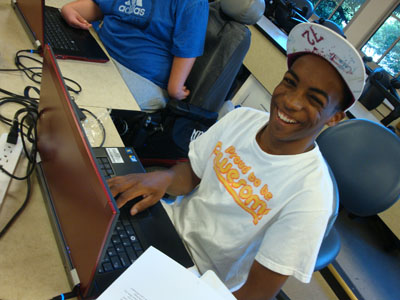
Among the strategies for meeting AccessComputing objectives are Communities of Practice for stakeholder groups. Communicating using email and other electronic tools, CoPs share perspectives and expertise and identify practices that promote the participation of people with disabilities in computing fields. The eight project CoPs are described below. Members in all CoPs:
- gain and share knowledge and help identify issues related to the underrepresentation of people with disabilities in computing fields
- help identify, field test, and validate Computing Department Accessibility Indicators to make computing departments more accessible to students with disabilities
- help plan, attend, and recruit others to attend AccessComputing Alliance activities
- recruit students, including veterans, with disabilities into AccessComputing Alliance e-mentoring, internships, academies, and workshops
- co-sponsor events and discuss potential new projects and funding possibilities
- disseminate information about their projects and results through the Knowledge Base
- help AccessComputing Alliance staff target articles to publications
Computing Faculty, Administrator, and Employer CoP helps computing faculty and administrators, as well as representatives from industry and professional organizations increase their knowledge about disabilities and make changes in computing departments that lead to more inclusive practices. Participants:
- introduce Alliance staff to administrators of professional computing organizations so that staff can help these organizations make their websites accessible, their conferences accessible to attendees with disabilities, and their conference programs inclusive of disability-related topics
- identify campus computing events to which students with disabilities might be invited
- discuss how to include accessibility topics in postsecondary computing curriculum
- discuss issues and help locate Ph.D. graduates with disabilities to recruit as faculty
- provide connections with computing faculty and industry for internships
- help Alliance staff target articles to computing publications
Broadening Participation CoP is populated with Alliance collaborators who administer alliances and projects that serve to broaden participation in computing fields. Members:
- discuss how to recruit participants with disabilities and accommodate them in their programs and activities and to, overall, make their offerings more accessible
- recruit their participants with disabilities into AccessComputing Alliance e-mentoring, internships, academies, and workshops to complement their activities
- identify, recruit, and accommodate eligible Alliance participants
- co-sponsor events and discuss potential new projects and share funding possibilities
- disseminate Alliance information and information about their projects and results through the Knowledge Base
- help plan and recruit participants for Capacity-Building Institutes
Disability Services CoP is comprised of disability service professionals from community/technical colleges, four-year colleges, and universities nationwide, together with their networks of postsecondary and K-12 schools (e.g., affiliates of AHEAD) and parent groups (e.g., affiliates of PACER). Members of this CoP:
- deliver presentations to computing faculty to share information about accommodations and campus services for students with disabilities
- work with computing professors and administrators to invite students with disabilities to career fairs, computing lectures, and other events; work with groups to make sure activities are accessible; and help bring speakers with disabilities and exhibits that focus on disability-related topics
- develop transition and bridge workshops in computing and/or help other Community of Practice members develop such activities
Veterans CoP is populated by veterans with disabilities, service providers, and volunteer mentors. Members of this CoP:
- interact regularly to improve service to veterans with disabilities and their families
- discuss how to recruit veterans with disabilities and accommodate them in their programs and activities
- devise solutions that increase the accessibility of their program offerings
- develop internships, academies, and workshops to complement their program activities
- identify, recruit, and accommodate eligible AccessComputing participants
- co-sponsor events, discuss potential projects, and share funding possibilities
- share common concerns in their practices
- identify problems, goals, and resources
- form collaborations
Deaf and Hard of Hearing CoP engages practitioners that support individuals who are deaf or hard of hearing and are interested in increasing the representation of these individuals in computing fields. It includes researchers, college educators, K-12 school teachers, and representatives of networks of precollege and postsecondary schools for the deaf and hard of hearing, professional organizations, parent groups, and precollege and postsecondary institutions that have special programs for students who are deaf and hard of hearing. Members of this CoP:
- explore strategies for increasing the participation of students who are deaf or hard of hearing in computing fields
- locate speakers who are deaf or hard of hearing and recruit participants who are deaf or hard of hearing to computing conferences and other events nationwide
- develop computing transition and bridge workshops/academies for students who are deaf or hard of hearing
- provide input on the document Equal Access: Universal Design of Computing Departments relevant to the inclusion of students, faculty, and staff who are deaf or hard of hearing in computing departments
- provide input regarding wording on all AccessComputing publications, web documents, and other materials to make them appeal to individuals who are deaf or hard of hearing, both those who identify with Deaf culture and those who do not
- provide ideas and feedback regarding the Advancing Deaf & Hard of Hearing in Computing website, including the searchable Knowledge Base of relevant articles
Blind and Low Vision CoP connects practitioners who support individuals who are blind or have low vision. Members include researchers, college educators, high school teachers, schools for the visually impaired, and professional organizations. Members of this CoP:
- explore strategies for increasing the participation of students who are blind or have low vision in computing fields
- locate speakers and participants who are blind or have low vision to computing conferences and other events nationwide
- develop computing transition and bridge workshops/academies for students who are or have low vision
Invisible Disabilities CoP includes stakeholders who support individuals who have invisible disabilities (e.g., learning disabilities, Asperger syndrome, attention deficits, psychiatric impairments) in computing fields. Members recruit project participants and explores strategies for increasing the participation of students with invisible disabilities in computing fields. Participants:
- gain and share knowledge and help identify issues related to the under-representation of people with invisible disabilities in computing fields
- discuss issues and help locate Ph.D. graduates with invisible disabilities to recruit as faculty
- provide connections with computing faculty and industry for internships
Mobility and Orthopedic CoP members explore strategies for increasing the participation of students with mobility or orthopedic impairments in computing fields and recruit project participants. Participants:
- gain and share knowledge and help identify issues related to the underrepresentation of people with mobility or orthopedic impairments in computing fields
- discuss issues and help locate Ph.D. graduates with mobility or orthopedic impairments to recruit as faculty
- provide connections with computing faculty and industry for internships
You and your colleagues can join AccessComputing CoPs by indicating which of the eight CoPs you would like to join and sending the following information to accesscomp@uw.edu:
- Name
- Position/Title
- Institution
- Postal Address
- Email Address
AccessComputing Website & Searchable Knowledge Base (AccessComputing: Building Capacity to Promote the Success of Students, Including Veterans, With Disabilities in Computing and Information Technology Fields 2011)
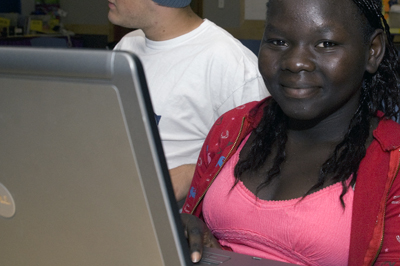
The AccessComputing website contains:
- information about project goals
- the application of evidence-based practices toward project deliverables
- resources for students with disabilities
- educational materials for postsecondary faculty and staff
- information about partners and collaborators
- program applications.
Knowledge Base
DO-IT maintains a searchable database of frequently asked questions, case studies, and promising practices related to how educators and employers can fully include students with disabilities in computing activities.
The Knowledge Base can be accessed by following the "Search Knowledge Base" link on the AccessComputing website. The Knowledge Base is an excellent resource for ideas that can be implemented in programs in order to better serve students with disabilities. Individuals and organizations are encouraged to propose questions and answers, case studies, and promising practices. In particular, the promising practices articles serve to spread the word about practices that show evidence of improving the participation of people with disabilities in computing. Contributions and suggestions can be sent to doit@uw.edu.
Examples of Knowledge Base questions include the following:
- How can I make my computing department more accessible to students with disabilities?
- Universally Designed Webpages: A Case Study on Access Issues for a Student with a Learning Disability.
- What adaptive technology is typically provided to students with disabilities on postsecondary campuses?
- What are specific computer applications that can assist students with learning disabilities?
- Are there any web-based tutorials on accessibility?
- How can principles of universal design be used to construct a computer lab?
AccessComputing Minigrants (AccessComputing: Building Capacity to Promote the Success of Students, Including Veterans, With Disabilities in Computing and Information Technology Fields 2011)
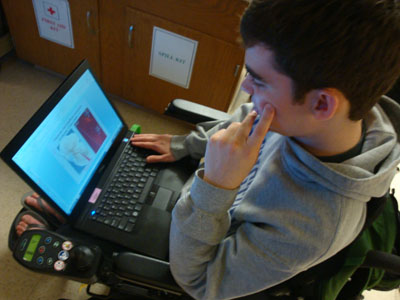
For a limited time, AccessComputing will offer funding for minigrants to support training, experiential learning, and other computing and IT-related activities nationwide. The ultimate goal is to increase the number of people with disabilities, including post-September 11 veterans, successfully pursuing computing careers.
An institution or other organization can seek funding to support:
- an existing computing event in order to attract/involve students with disabilities. Check with your computing department and see if there is an upcoming event to which you could add a mini-program for students with disabilities. For example, AccessComputing funds speakers and exhibits focused on assistive technology and other disability issues as part of the UW Engineering Open House. In addition, students with disabilities are invited to a pizza lunch to network with other students, faculty, and mentors
- a stand-alone new event to attract and support students with disabilities in computing fields
- a training event for faculty, administrators, or staff to improve access to computing curricula and programs for students with disabilities and/or to include disability-related topics in their course curricula
- a professional development opportunity for students with disabilities, faculty, and staff to attend a conference or symposium
Visit Apply for an AccessComputing Minigrant for more information and email accesscomp@uw.edu to consult about the availability of funds.
Acknowledgments (AccessComputing: Building Capacity to Promote the Success of Students, Including Veterans, With Disabilities in Computing and Information Technology Fields 2011)
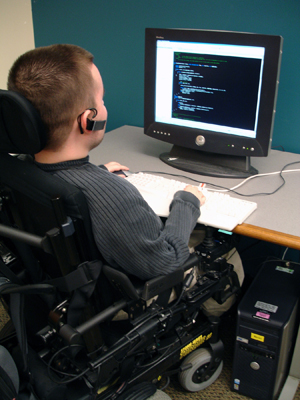
AccessComputing Capacity Building activities are funded by the National Science Foundation (grant #CNS-1042260). They were coordinated by the Alliance for Access to Computing Careers, which is led by the Department of Computer Science and Engineering and DO-IT at the University of Washington. Any opinions, findings, and conclusions or recommendations expressed in this material are those of the CBI presenters and publication authors and do not necessarily reflect the views of the National Science Foundation.
Some of the content of this publication is taken with permission from the DO-IT website. Permission is granted to modify and duplicate these materials for non-commercial purposes provided the source is acknowledged. An electronic version of this publication is available at www.washington.edu/doit.
DO-IT
University of Washington
Box 354842
Seattle, WA 98195-4842
doit@uw.edu
www.washington.edu/doit
206-685-DOIT (3648) (voice/TTY)
888-972-DOIT (3648) (toll free voice/TTY)
206-221-4171 (FAX)
509-328-9331 (voice/TTY) Spokane
Founder and Director: Sheryl Burgstahler, Ph.D.
Program Manager: Scott Bellman